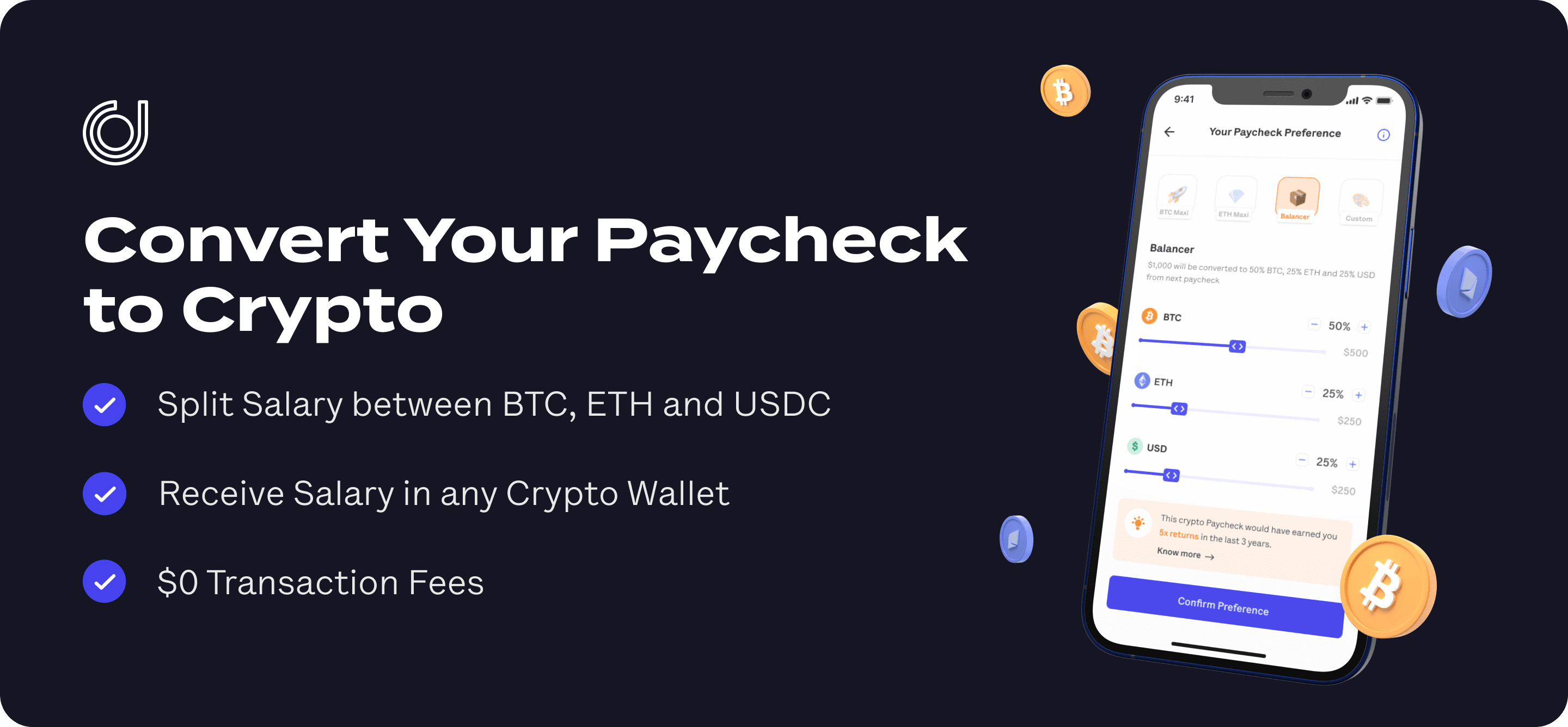Crypto
•
12 mins read
•
July 30, 2021
Stablecoins: Everything You Need to Know
We break down the fast facts of the most stable and reliable cryptocurrency class out there.

Even if you’re not an avid reader of financial news, you can’t have missed the explosion of cryptocurrency that has taken over the internet. While most traditional economists are skeptical of cryptocurrencies due to their risk level and volatility, they do promise to be a high-reward investment, making them extremely attractive to investors who have an appetite for risk.
Moreover, cryptocurrency is attractive because it allows you to send payments without needing to trust an intermediary institution, like a bank. For
in particular, cryptocurrencies are extremely useful, as there are no currency conversions that need to take place, or
for processing an
(however, people do need to consider
, as well as the cost of converting typical currencies into cryptocurrency, because acquiring cryptocurrency isn’t a free transaction).
The extreme volatility of cryptocurrencies also makes them difficult for people to use on a daily basis, mostly because the price of each cryptocurrency fluctuates so wildly. But, what if you could have the best of both worlds?
Enter: stablecoin.

What are Stablecoins?
Stablecoins are a type of cryptocurrency that attempt to bring stability to the cryptocurrency universe through a pegging system.
This is similar to what a lot of volatile currencies do, too, for instance in Emerging Markets (EMs). These countries will peg their currency to a more stable currency with fewer volatile price fluctuations, like the United States Dollar (USD).
In the past, most currencies were pegged to the value of a commodity, like gold, but the USD has become such a stable currency worldwide that it’s a common currency choice to use as a peg.
Stablecoins employ this same method, tying their value to more stable assets — in this case, fiat currencies or government-issued currencies like the USD or the Euro. But, how is this done? Essentially, the entity behind a stablecoin will set up a “reserve” where it secures the asset, for example a bank, where $1,000,000 is stored to back up one million units of a stablecoin.
This is only one way in which digital stablecoins are backed by assets. With this method, the money in reserve serves as collateral, meaning that the owner of the stablecoin can cash out at any time and leave with an equivalent amount of the reserve currency. Other types of stablecoins, however, can be collateralized by other cryptocurrencies, or even precious metals like silver or gold.
Why Were Stablecoins Invented?
Given the volatile nature of cryptocurrencies, stablecoins were introduced to offer more reliable options to the market in 2014 and 2015. This is when popular cryptocurrencies like Bitcoin and Ethereum were experiencing extreme volatility, making them impossible to use, despite their advantages in terms of privacy and security.
Stablecoins were created to be used the way cryptocurrencies were originally intended to be used, as a secure means of transaction. After all, most businesses weren’t able to accept a currency like Bitcoin or Ethereum, the value of which would fluctuate the next day.
Initially, early cryptocurrency investors used stablecoins as a safe haven in the event of a market decline or crash. For example, an investor could convert their Bitcoin to stablecoin on a crypto trading platform if the price of Bitcoin suddenly began to drop rapidly.
Prior to stablecoins being introduced, an investor would have had to convert their Bitcoin into a fiat currency, like the USD, but many cryptocurrency exchanges either don’t allow fiat currencies on their platform or charge a large fee for converting cryptocurrency into fiat currency.
Now, however, stablecoins have a plethora of applications:
- For anyone who needs to make international payments quickly and securely to businesses looking for a cheaper and more efficient way to provide payments to overseas suppliers, stablecoin provides the ideal solution.
- Not only do you avoid international transaction fees and currency exchange rates, but you also avoid the risk of a speculative asset like Bitcoin, the value of which can even be affected by a mere Tweet.
- Moreover, speed is a huge plus as cryptocurrency transactions can take minutes versus transferring money overseas which can sometimes take days.
- Stablecoins are also particularly useful for people in underbanked communities who may not be able to trust their financial institutions but can use this form of digital currency instead.
How Many Stablecoins Are There?
There are multiple types of stablecoins — those collateralized by fiat currencies, some that are crypto-collateralized, others that are backed by precious metals, and still some that are non-collateralized. While an exact number is unknown, there are roughly two hundred stablecoins that have been released to date.
What are the biggest stablecoins out there, though?
If you’re looking for fiat-collateralized options, then the most popular stablecoins are Tether (USDT), the Gemini Dollar (GUSD), True USD (TUSD), Binance (BUSD), or Paxos Standard (PAX). The majority of these are pegged to the USD, although Stablecoins pegged to the Euro or even the Japanese Yen also exist. For instance, the BiLira is pegged to the Turkish Lira.
Commodity-backed stablecoins that are pegged to gold are fairly popular, like Tether Gold or Paxos Gold. You can actually redeem tokens of these stablecoins for actual gold if you wanted (and underwent a verification process). However, not all commodity-backed stablecoins can be redeemed for the actual commodity they are pegged to. While this works with precious metals, others, such as Venezuela’s experimental Petro stablecoin, which is backed by a barrel of oil, cannot be “cashed in” for actual oil.
There are even non-collateralized stablecoins, known as algorithmic stablecoins, which are either “burned” or created to keep the coin’s value stable. If the price of this type of stablecoin drops, the algorithm will automatically reduce the quantity of stablecoin in circulation to introduce scarcity and drive the price up, keeping the value stable.
Needless to say, it is very difficult to perfect this form of stablecoin, which is why not too many non-collateralized stablecoins exist. The Ampleforth (AMPL) token has been around since 2018, however, even as other algorithmic stablecoins have been shut down for various reasons, like Basis, one of the earliest algorithmic stablecoins to enter the market.
So, is Bitcoin a stablecoin, then?
Quite simply put: no, Bitcoin is not a stablecoin, though it’s a common query. Bitcoin’s price is not regulated the way the value of stablecoins is. Bitcoin is a highlighly speculative asset, which is traded on exchanges, while stablecoin is used more in real-life scenarios.
For instance, stablecoins can be used to send
streamline P2P payments, and even protect against local currency crashes.
Stablecoins: Limitations
If you’ve been following along so far, then stablecoins seem like a good bet, right? It’s not volatile like Bitcoin or other types of cryptocurrencies, and has far more real-world applications.
But, there are limitations to stablecoins, too.
For instance, if the reserves that a stablecoin is pegged to are stored with a bank or some other third party, you are exposed to counterparty risk, which is a vulnerability. Does the entity really have the collateral it claims to have? You certainly have no way of confirming this — and this has actually been a question frequently posed to Tether, for instance, over whether it maintains a true 1-to-1 backing between USDT tokens and U.S. dollars.
Fiat-backed stablecoins are also constrained by all of the regulations that come with a fiat currency, compromising the efficiency of the conversion process and the potential efficacy of a digital currency like a stablecoin.
For example, Facebook’s Libra currency promised a stablecoin backed by a basket of global fiat currencies, thus broadening the coin’s appeal and utility. However, it has received so much regulatory blowback that the project’s management has since dropped its multi-currency aim, distancing itself from Facebook, and rebranding altogether.
What’s more, if a currency undergoes a massive crisis, such as Black Wednesday in the UK, or the 1998 Ruble crisis that occurred in Russia, then the stablecoin would also take a hit. This is already true of currencies that are pegged, so stablecoins face the same risk.
Stablecoins are also much more heavily regulated than other types of cryptocurrencies, especially commodity-backed stablecoins. If you ever wanted to get your real bars of gold, for example, it could take months and an expensive trip to the vault. Moreover, there’s always the risk that the underlying asset crashes in value (after all, gold’s volatility led to the creation of cash and currencies from the Gold Standard system of exchange in the past).
Crypto-collateralized stablecoins also come with their own set of issues. Being pegged to other cryptocurrencies makes them much more vulnerable to price instability in comparison to fiat-collateralized or commodity-collateralized stablecoins, for obvious reasons.
Finally, even though stablecoins offer the potential to protect or streamline financial services, they face potential limitations from local governments. For instance, in a country with high inflation rates, the government may look to block stablecoins pegged to foreign currencies, in order to protect local currencies.
This is all to say that stablecoins come with their own share of risk.
Moreover, if you’re looking for a
, stablecoins are unlikely to provide the returns that Bitcoin or cryptocurrencies like Dogecoin have delivered. You can earn interest on your stablecoin, since buying a commodity-backed stablecoin is similar to buying gold, oil, or the commodity your coin is collateralized to.
Or, you can always buy stablecoin and wait to move it to Bitcoin or other cryptocurrencies as you watch the markets and wait for them to calm. However, simply buying stablecoin and keeping it will yield few gains.
How to Buy Stablecoins
If you want to purchase stablecoins, you will need an account with a crypto exchange system or a digital wallet where you can buy cryptocurrency. Exchanges like Coinbase may offer some stablecoins, but most centralized exchange systems will list fiat-collateralized coins only. For other options, you will need to use a decentralized exchange system to swap any existing token for most other stablecoins.


